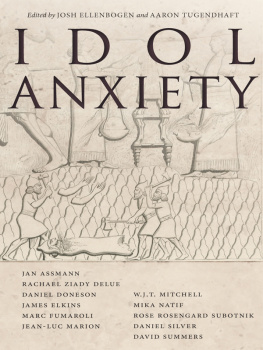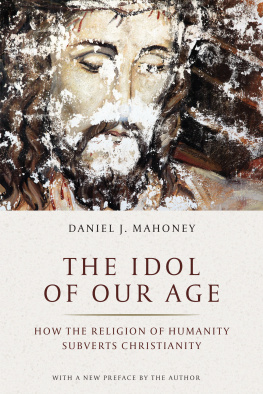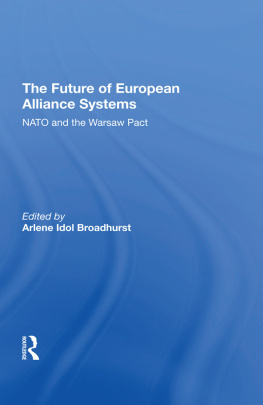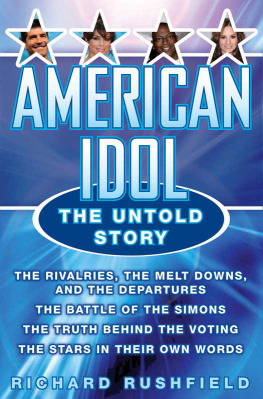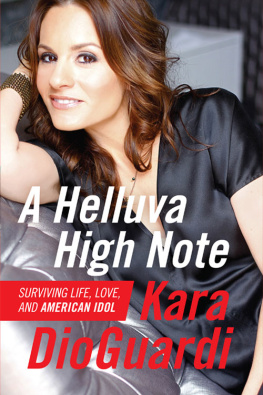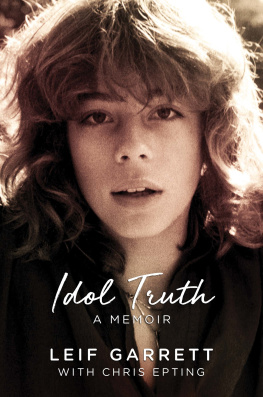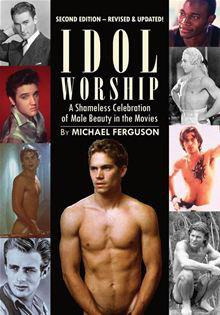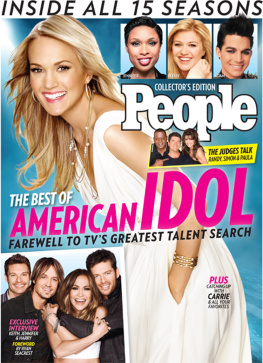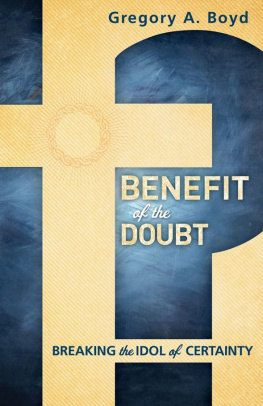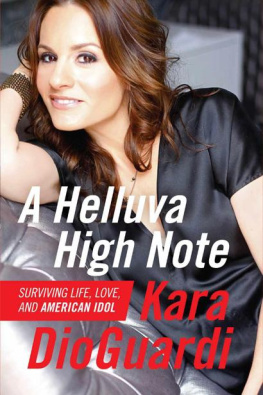IDOL ANXIETY
IDOL ANXIETY
Edited by
JOSH ELLENBOGEN
and
AARON TUGENDHAFT
STANFORD UNIVERSITY PRESS STANFORD, CALIFORNIA
Stanford University Press
Stanford, California
2011 by the Board of Trustees of the Leland Stanford Junior University. All rights reserved.
No part of this book may be reproduced or transmitted in any form or by any means, electronic or mechanical, including photocopying and recording, or in any information storage or retrieval system without the prior written permission of Stanford University Press.
Printed in the United States of America on acid-free, archival-quality paper
Library of Congress Cataloging-in-Publication Data
Idol anxiety / edited by Josh Ellenbogen and Aaron Tugendhaft.
pages cm
Includes bibliographical references and index.
ISBN 978-0-8047-6042-3 (cloth : alk. paper)ISBN 978-0-8047-6043-0 (pbk. : alk. paper)
1. Idols and imagesWorship. 2. Idolatry. 3. Idols and images in art. 4. Idolatry in art. 5. Idols and images in literature. 6. Idolatry in literature. 7. Art and religion. I. Ellenbogen, Josh, editor of compilation. II. Tugendhaft, Aaron, editor of compilation.
BL485.I35 2011
202'.18dc22 2011011025
Typeset by Bruce Lundquist in 10/14 Minion Pro
E-book ISBN: 978-0-8047-8181-7
CONTRIBUTORS
JAN ASSMANN is Professor of Egyptology (emeritus) at the University of Heidelberg and the 1998 winner of the prestigious Deutsche Historikpreis (German History Prize). He is the author of numerous books on ancient Egypt, Israel, and religion more generally, and has held visiting professorships at such institutions as the Collge de France in Paris, the Hebrew University of Jerusalem, and the University of Chicago.
RACHAEL ZIADY DELUE is Assistant Professor of American Art at Princeton University and is affiliated faculty in Princetons Center for African American Studies. Her areas of research include landscape theory, race and visual culture, and visual theory. DeLue has served as a consultant to various museums and collections, including the Terra Foundation, and in June 2005 was a faculty member for a Terra-sponsored professional development program for public high school teachers in Chicago. She received her Ph.D. in art history from The Johns Hopkins University in 2001.
DANIEL DONESON is a Fellow in the Program on Constitutionalism and Democracy, the Department of Politics, at the University of Virginia. He has held fellowships at the Hebrew University of Jerusalem, the cole des hautes tudes en sciences sociales in Paris, and the Frei Universitt in Berlin. Doneson was educated at Swarthmore, Harvard, and the University of Chicago, where he received his Ph.D. from the Committee on Social Thought. His scholarly research and teaching focus on classical political philosophy, Jewish thought, German philosophy, and the theory and practice of modern liberal democracy, especially on the problematic relation between philosophy, religion, and politics.
JAMES ELKINS is E. C. Chadbourne Chair in the Department of Art History, Theory, and Criticism at the School of the Art Institute of Chicago. The author of numerous books, his work focuses on the description of visual experience in fine art, popular art, and nonart images of all sorts, including medicine, law, physics, and other fields; and in the conceptualization of visual experiences in general.
JOSH ELLENBOGEN is Assistant Professor of Art History at the University of Pittsburgh. He earned his Ph.D. in art history from the University of Chicago, and has also trained in intellectual history and history of science. His research focuses on history of photography, modernism, art historiography, and intersections between art and science.
MARC FUMAROLI is Professor of Rhetoric and Society in Europe (emeritus) at the Collge de France and a member of the Acadmie franaise. He is an historian of early modern European literature and culture, and the leading authority on seventeenth-century rhetoric. Fumaroli has been a regular visiting professor at the University of Chicago and Columbia University.
JEAN-LUC MARION is Professor of Philosophy at the University of Paris-Sorbonne (Paris IV) and the Andrew Thomas Greeley and Grace McNichols Greeley Professor of Catholic Studies and Professor of the Philosophy of Religions and Theology in the Divinity School and Professor in the Committee on Social Thought and the Department of Philosophy at the University of Chicago. Marion is the author of numerous books in the history of modern philosophy and in contemporary phenomenology. He is a member of the Acadmie franaise.
W. J. T. MITCHELL is Gaylord Donnelley Distinguished Service Professor in the Departments of English and Art History at the University of Chicago. He is the editor of the journal Critical Inquiry and author of numerous books and articles on the history and theories of media, visual art, and literature, from the eighteenth century to the present. Mitchell has been the recipient of numerous awards, including the Guggenheim Fellowship and the Morey Prize in art history given by the College Art Association of America.
MIKA NATIF received her Ph.D. from the Institute of Fine Arts, New York University, in 2006, and is currently a Mellon Postdoctoral Fellow at the College of the Holy Cross in Worcester, Massachusetts. Her expertise is in the art and architecture of the Muslim world, with a special interest in Central Asia, Iran, and India in the post-Mongol era. She is author of numerous articles and book chapters on Persian and Mughal painting and illustrated manuscripts, in such journals as the Muqarnas, Studia Islamica, and Artibus Asiae. Her current book manuscript explores the intercultural and artistic exchanges between India and Europe in the sixteenth and seventeenth centuries.
DANIEL SILVER is Assistant Professor in the Department of Sociology at the University of Toronto. He completed his Ph.D. in the Committee on Social Thought at the University of Chicago and his B.A. in philosophy and rhetoric at the University of California, Berkeley, studying in Germany and Greece in the interim.
ROSE ROSENGARD SUBOTNIK is Professor of Music (emerita) at Brown University. The author of influential studies on music and critical theory, she is the recipient of a Fulbright Scholarship to Vienna, a Guggenheim Fellowship, an ACLS Fellowship, and a Howard Fellowship. She has served on the Board of the American Musicological Society, where she was elected Honorary Member and winner of the H. Colin Slim Award for best scholarly article (2009).
DAVID SUMMERS is the William R. Kenan, Jr., Professor of the History of Art at the University of Virginia. Educated at Brown and Yale, he is the author of two major studies of Michelangelo, as well as of Real Spaces: World Art History and the Rise of Western Modernism, which appeared in 2003. He was elected to the American Academy of Arts and Sciences in 1996.
AARON TUGENDHAFT teaches philosophy and history of religion at New York Universitys Gallatin School of Individualized Study. He is a doctoral candidate in the Skirball Department of Judaic Studies at New York University and holds degrees in art history and in social thought from the University of Chicago. In 2008, he curated the exhibition Idol Anxiety for the David and Alfred Smart Museum of Art in Chicago.
EDITORS STATEMENT
The idea for this anthology began on camelback. In January 2006, we were in Jordan doing research on the aniconic practices of Nabatean polytheism. At the time, Aaron Tugendhaft had already begun work curating Idol Anxiety for the University of Chicagos David and Alfred Smart Museum of Art. The exhibition, which would explore the diversity of practices associated with the notion of idolatry, was to run from April to November 2008. Tugendhaft had the idea of preparing an anthology of essays to complement the show and asked Josh Ellenbogen if he would act as coeditor. Ellenbogen agreed and work began on the present volume. It soon became apparent that the exhibition would come and go long before the anthology would be ready for publication. This allowed us to loosen the bonds between exhibition and book. Though they retain the same title, the two have become more cousins than siblings. Limitation of space restricted the exhibition to objects of a strictly religious character, preventing an exploration of idolatrys relevance beyond the realm of religion. Certain of the essays in this volume were accordingly chosen to broaden the themes of the show. Conversely, not all of the themes and cultures treated in the exhibition have found their way into the book; our beloved Nabateans, for example, had a cameo appearance in Chicago but find no mention here beyond this Statement. Above all, while the show was an essay in a single voice, in putting together this volume we have embraced the multiplicity of voices natural to the anthology form.

